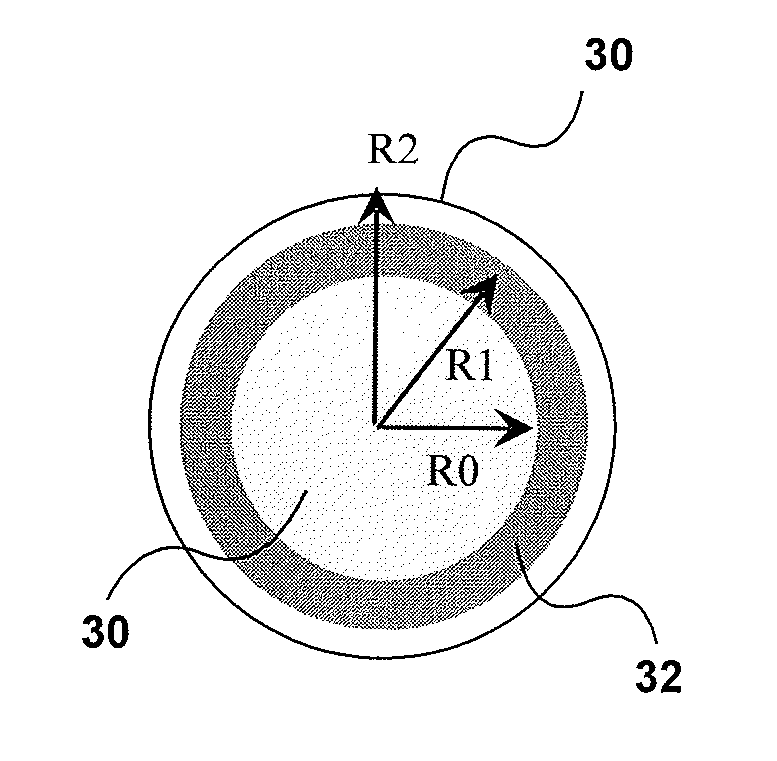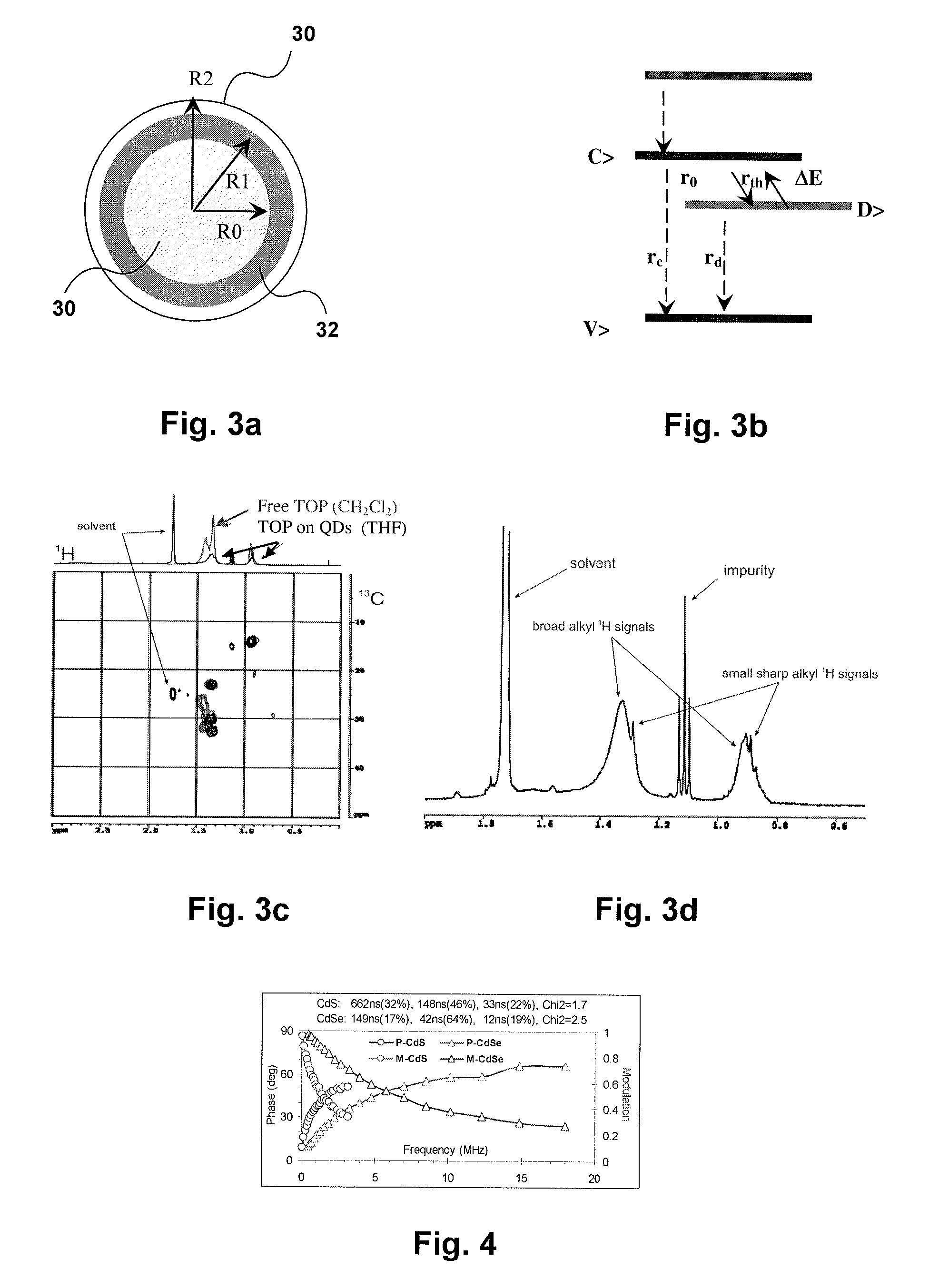Semiconductor nanocrystals for time domain optical imaging
a technology of time domain optical imaging and nanocrystals, applied in the field of optical imaging, can solve the problems of inability to determine the depth, inability to use visible light for most in vivo imaging applications, and inability to achieve depth, so as to increase the radiative decay rate, increase the pl dynamics, and reduce the effect of pl lifetim
- Summary
- Abstract
- Description
- Claims
- Application Information
AI Technical Summary
Benefits of technology
Problems solved by technology
Method used
Image
Examples
Embodiment Construction
[0043]Various nanocrystallites were prepared as shown in FIG. 3a, which is a schematic model of one colloidal nano-crystallite which consists of three components, namely the capping ligand layer 30 which provides colloidal stability, the surface layer 32 between the core and the capping layer, and the core 30.
[0044]CdSe / ZnS core-shell quantum dots (QDs) were synthesized by sequential addition of a mixture of the Zn and S precursors into CdSe QDs in Tri-octylphosphine (TOP) (left) and TOP and amine (right). For the synthesis of CdSe QDs, CdO as the Cd source in the preparation of colloidal TOP-capped (left) and TOP-amine-capped (right) CdSe nano-crystals; the procedure involves nucleation at one temperature (250° C.-320° C.) followed by a period of growth at another temperature (250° C.-320° C.), without the use of any acid. Batches of CdSe nano-crystals were synthesized by which TOPSe / TOP solutions were injected into Cd-complex solutions in TOP or in a mixture of TOP and amine. The ...
PUM
| Property | Measurement | Unit |
|---|---|---|
| fluorescence lifetime | aaaaa | aaaaa |
| temperatures | aaaaa | aaaaa |
| emission wavelength | aaaaa | aaaaa |
Abstract
Description
Claims
Application Information
 Login to View More
Login to View More - R&D
- Intellectual Property
- Life Sciences
- Materials
- Tech Scout
- Unparalleled Data Quality
- Higher Quality Content
- 60% Fewer Hallucinations
Browse by: Latest US Patents, China's latest patents, Technical Efficacy Thesaurus, Application Domain, Technology Topic, Popular Technical Reports.
© 2025 PatSnap. All rights reserved.Legal|Privacy policy|Modern Slavery Act Transparency Statement|Sitemap|About US| Contact US: help@patsnap.com



